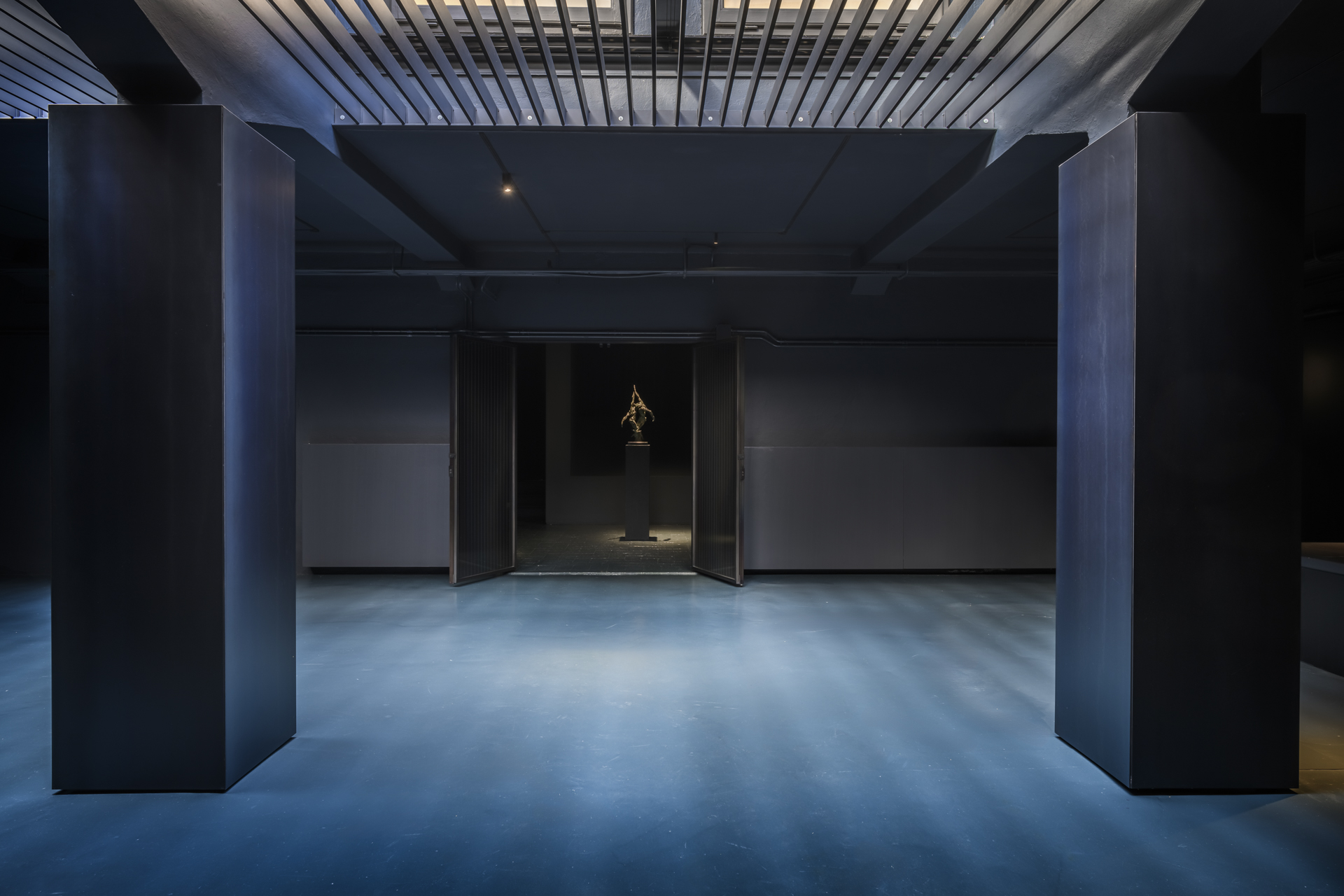
Art as a Tool for Awareness – Keil Space 2025
Keil Space continues to attract visitors from diverse backgrounds, united by their sensitivity to artistic experiences as a form of inner exploration. Among them, historian Laura Di Giuseppe recently visited the space, establishing interesting connections and evaluating the emotional release and psycho-physical processes that the Keil Space Experience can induce. Impressed by the immersive quality of the journey and the unique atmosphere created between environment and observer, she decided to share a written contribution. In her text, Laura describes the symbolic and evocative power of Keil Space, identifying the proposed artistic experience as a tool capable of fostering states of release and awareness that, in some ways, resemble a therapeutic act. Below is the full text by the art historian:
Keil Space is not just an exhibition space; it is not merely a container for what is displayed. The immersive experience it aims to offer goes beyond the gestaltic engagement of the senses. The added value of Keil Space lies in the relationship established with the guide, who accompanies the observer in the creation of the visit path, providing tools for understanding the artworks while also leaving ample room for freedom in the enjoyment and interpretation of visual, olfactory, and auditory stimuli. This encourages direct engagement with the works and active participation.
The visit to Keil Space thus becomes a unique aesthetic experience in the contemporary exhibition landscape, far removed from the mass consumption models one is accustomed to, and capable of prompting reflections on one’s relationship with oneself and the world through art.
The introduction to the exhibition space occurs almost ritually: visitors descend into the space, which grows darker as they move, until reaching the basement of the building. The relationship between this space and the surrounding urban context is based on a break; the external world is progressively left behind to enter an environment immersed in half-light, where dark walls, smells, and sounds enhance the perception of suspension in time within another space. The driving center, the heart around which the three rooms of the path are organized, consists of three pillars, three dark gray parallelepipeds in dialogue with the environment. These pillars tautologically represent the three values that have supported the artist’s work and life. The possibility of exploring the sensory relationship between the individual and space, which these sculptural-architectural elements represent, can, in some respects, recall the research of Robert Morris, who was influenced by reflections on the centrality of the body in performative contexts.
From here, visitors access the first room, dedicated to the First Generation Bronzes. Circling around Lovers, one realizes the complexity of Sam Keil’s compositional structures, where weights and counterweights are carefully studied by the artist to create the dynamics of a spiral motion, marked by the alternation of solids and voids that determine its plastic rhythm in space. These figures exhibit a strong gestural component in their modeling, ranging from more archaic forms in the clear, geometric definition of volumes (such as in Preghiera or Cavalli d’Acqua) to more fluid and dematerialized forms – though still with sharp profiles – where the decomposition of planes opens the surfaces to greater integration with the surrounding space. This is the case with the numerous dancer sculptures in the room, whose strongly unbalanced poses often appear as true leaps into the void, reflecting the artist’s interests in music and dance.
In the room dedicated to the Second Generation Bronzes, the language changes radically, showing a departure from the influence of the artist Dame Elizabeth Frink, under whom Sam Keil trained. Whereas in the First Generation, the sculptures opened to include space, in Sabre, the patina and reflectivity of the surfaces ‘sculpt’ the environment, drawing a path of shadows and light that, from the past, looks toward the present and projects into the future. The geometrized form of an ancient spear is carefully designed to respond to artificial lighting, recreating not only the visual effect of sunlight but also a psychological effect, a feeling of emotional relaxation, which shares some commonalities with the installations of Ólafur Elíasson.
The visit culminates in the last room, dedicated to the New Generation bronzes, where the sounds and smells, which up until then have constituted the background of an almost purely visual experience, become as important as coordinates for understanding the space one is in.
The observer is left alone in a process of potentially infinite perceptual discovery, attempting to decipher what is being observed and reflecting on the emotions evoked by this unsettling scenario. With their vivid and iridescent colors, these spaces transport the observer into a cosmic dimension.
Here, through the use of advanced technologies, the artist’s work returns to its origin, reaffirming her fidelity to bronze and reflections on its surface, which, however, now carries new meanings and new aesthetic and psychological implications.
We thank Laura Di Giuseppe for her valuable contribution and invite readers to experience Keil Space by booking an appointment through keilspace.com
